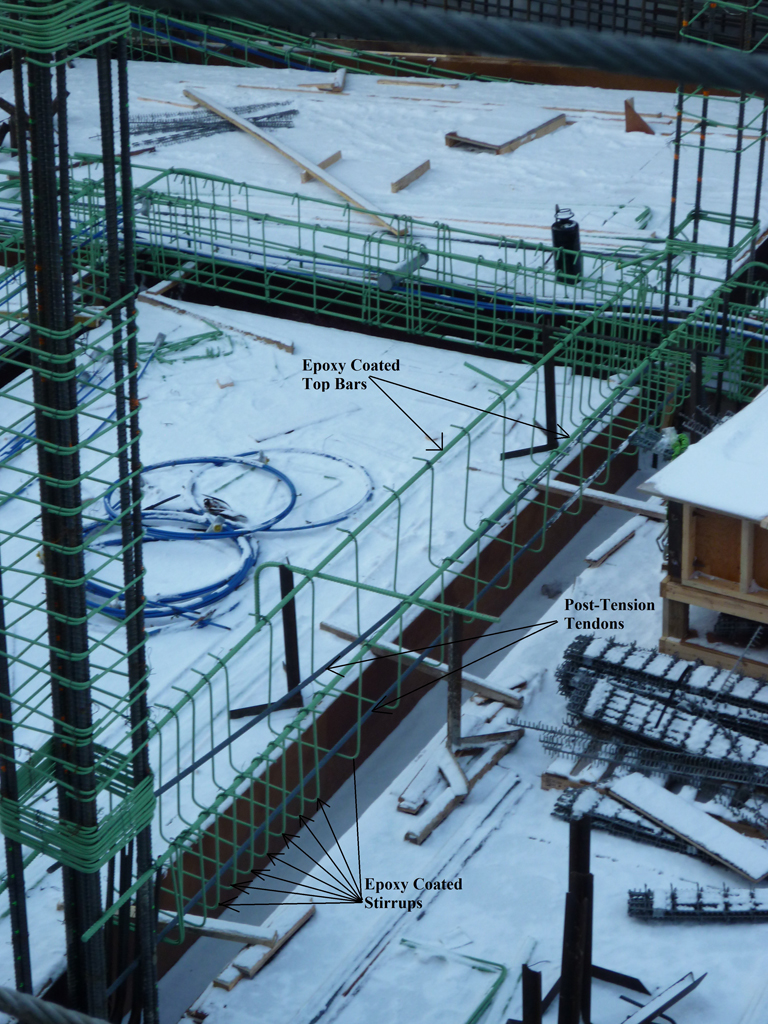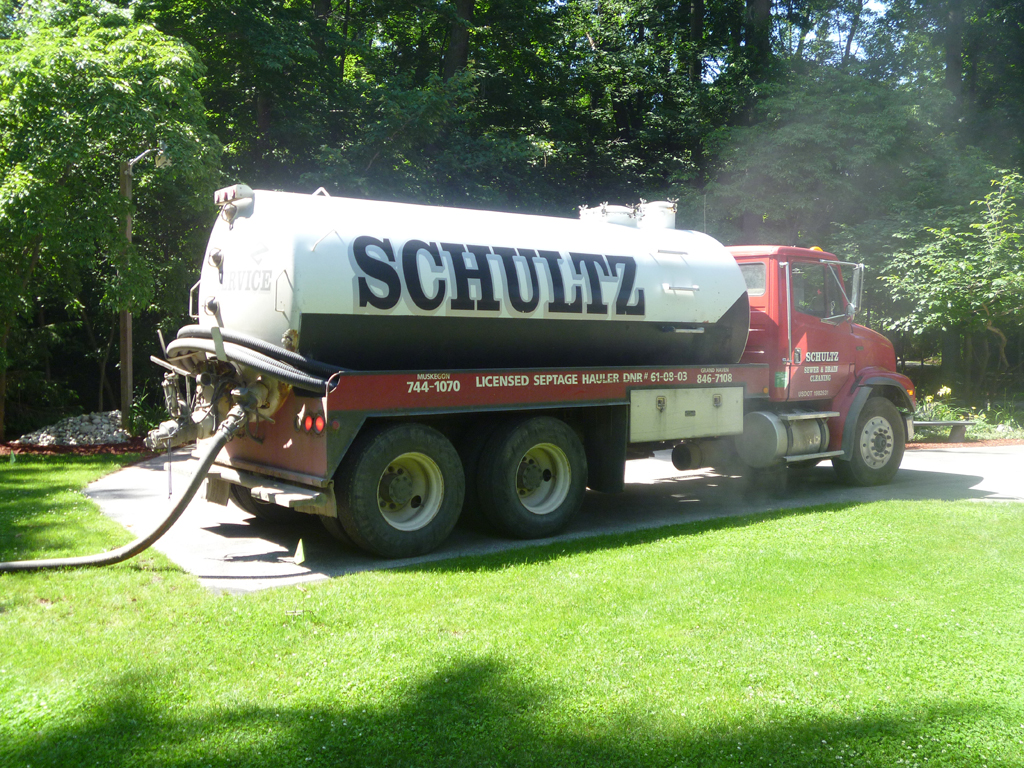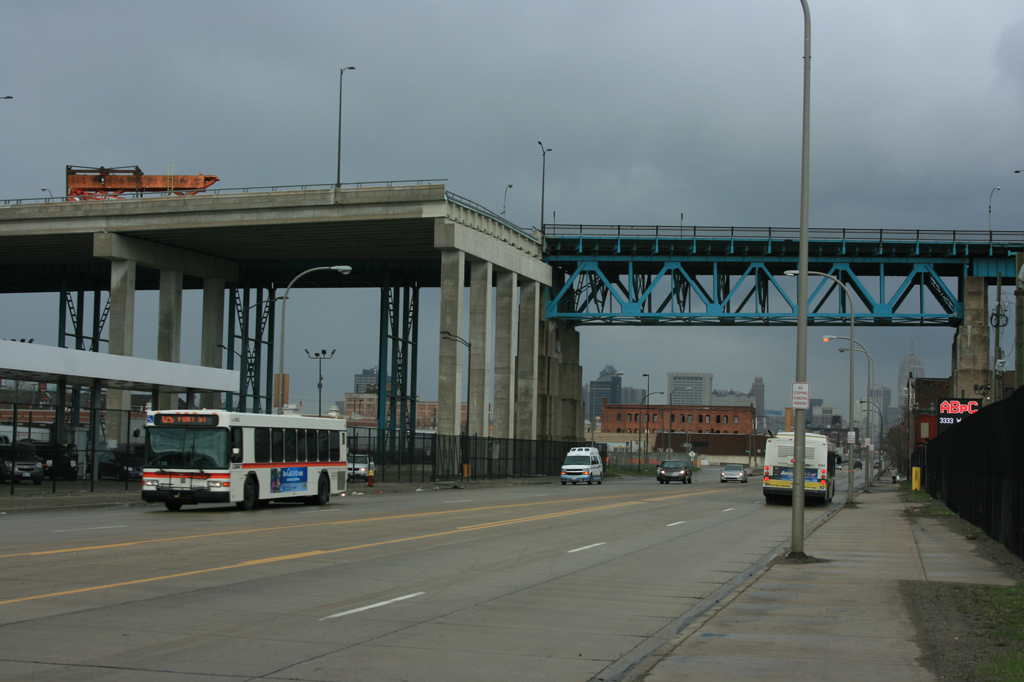
Photo Credit: Alex Mead
Above is a concrete placing crew working on a large mat foundation. The workers must coordinate their efforts in order to complete the job before the concrete cures. The workers near the bottom of the page are consolidating the concrete with vibrators. While another worker, not pictured above, gives the initial leveling with a tool called a screed. The final touch for this rough finish job is a broom finish done by the worker in the orange hard hat.







